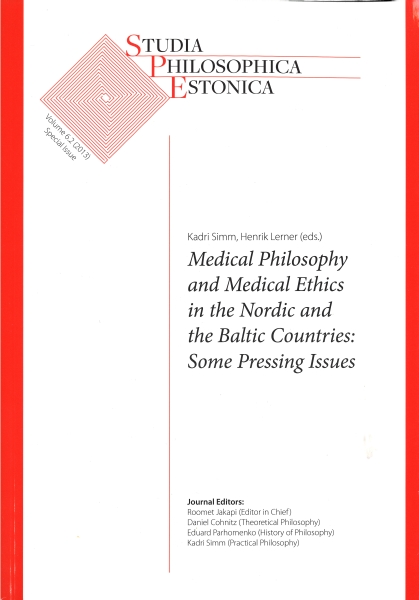Identification and Classification of Diseases: Fundamental Problems in Medical Ontology and Epistemology
DOI:
https://doi.org/10.12697/spe.2013.6.2.02Keywords:
classification of diseases, historical development, ICD, SNOMEDAbstract
During the last three centuries there has been remarkable development in the area of the identification and classification of diseases. The taxonomic systems adopted in the 18th century by, for instance, Sauvages and Linnaeus bare no resemblance to the modern nomenclatures for pathological phenomena. The aim of this paper is to give a brief historical presentation, but also a critical analysis, of a number of crucial ideas and theories behind the construction of certain major disease classifications. My focus in the second half of the paper is on the most influential modern systems of classification, the International Statistical Classification of Diseases and Related Health Problems (ICD) and the International Systematized Nomenclature of Human and Veterinary Medicine (SNOMED). The former is the official classification adopted by the World Health Organization and is used mainly for clinical and administrative purposes. The latter is a highly complex system of classification which has recently been developed for a variety of purposes (including medical research) and is meant to be read and handled by computers. ICD, although widely used all over the world, has salient and well-known logical deficiencies. SNOMED has been introduced partly to remedy these deficiencies. I conclude, however, that SNOMED, in spite of its sophisticated resources, cannot completely replace ICD. For many clinical and administrative purposes there is need of a relatively simple system that can be handled by the ordinary doctor and the ordinary health-care administrator.
References
Aretaeus (1972). The Extant Works of Aretaeus, The Cappadocian, Boston Milford House, Boston. edited by F. Adams.
Arosenius, E. (1928). Bidrag till det svenska tabellverkets historia, Nordiska bokhandeln, Stockholm.
Ceusters, W. and Smith, B. (2007). Ontology as the core discipline of biomedical informatics, in S. Stuart and G. Crnkovic (eds), Computation, Information, Cognition: The Nexus and the Liminal, Cambridge Scholars Publishing, Cambridge, pp. 104-122.
Faber, K. (1923). Nosography in Modern Internal Medicine, Paul B. Hoeber, New York.
Fagot-Largeault, A.(1989). Les causes de la mort. Histoire naturelle et facteurs de risque, J. Vrin, Paris.
Farr, W. (1885). Vital Statistics. A Memorial Volume of Selections from the Reports and Writings, Sanitary Institute, London. edited by N.A. Humphreys.
ICD, The International Statistical Classification of Diseases and Related Health Problems (1992/2011). WHO, Geneva.
International Classification of Diseases: The Nomenclature of Diseases and of Causes of Death, as revised and adopted in 1900 by the International Commission (1907). Melbourne.
King, L. S. (1982). Medical Thinking: A Historical Preface, Princeton University Press, Princeton.
Nordenfelt, L.(1983). Causes of Death: A Philosophical Essay, ForskningsrÃ¥dsnämnden, Stockholm.
Nordenfelt, L. (1995). On the Nature of Health, D. Reidel Publishing Company, Dordrecht.
Nordenfelt, L. (ed.) (1986). Hälsa, sjukdom, dÖdsorsak, LiberfÖrlag, MalmÖ.
Papaspyros, N. (1964). The History of Diabetes Mellitus, Georg Thieme Verlag, Stuttgart.
SNOMED, The International Systematized Nomenclature of Human and Veterinary Medicine(2012). International Health Terminology Standards Development Organisation CVR. SNOMED Clinical Terms User Guide, July 201 International Release.
SNOP, Systematized Nomenclature of Pathology (1965). College of American Pathologists, Chicago





